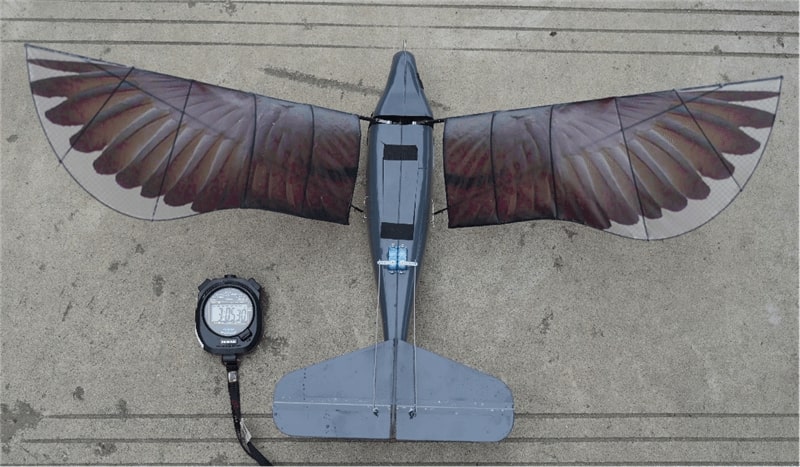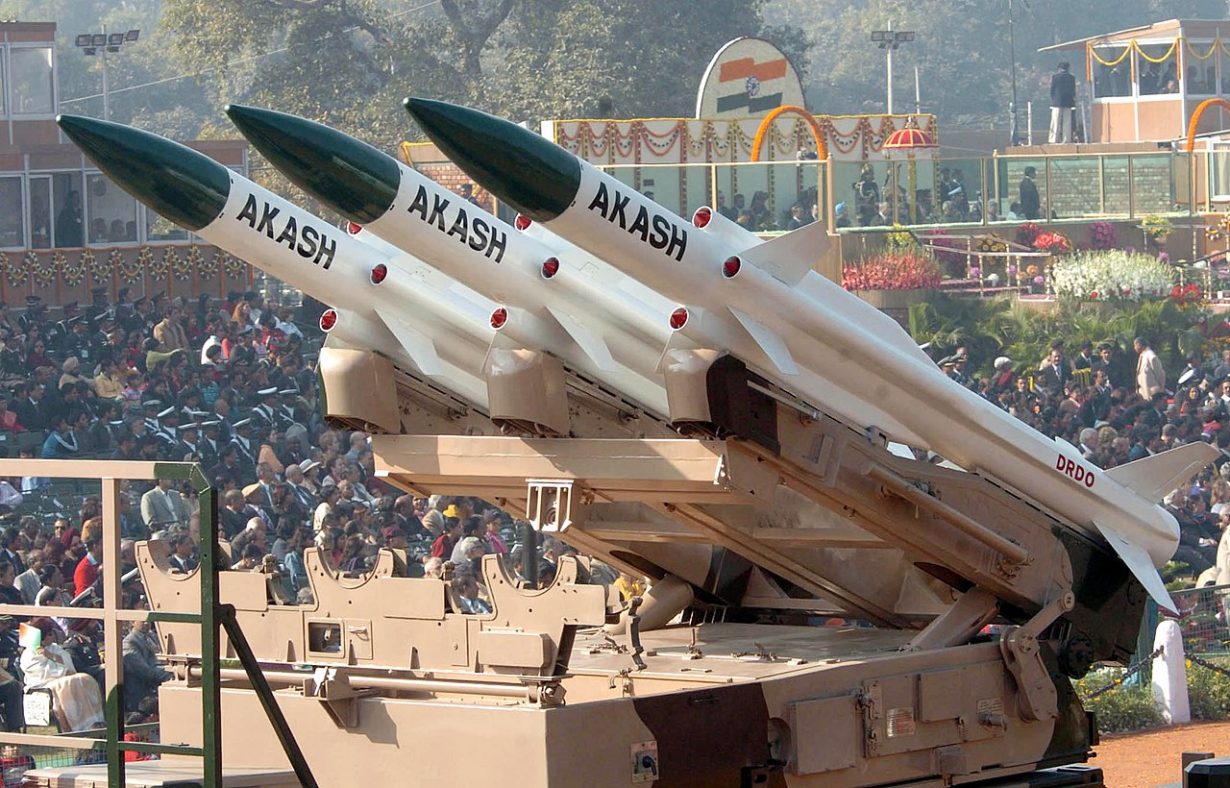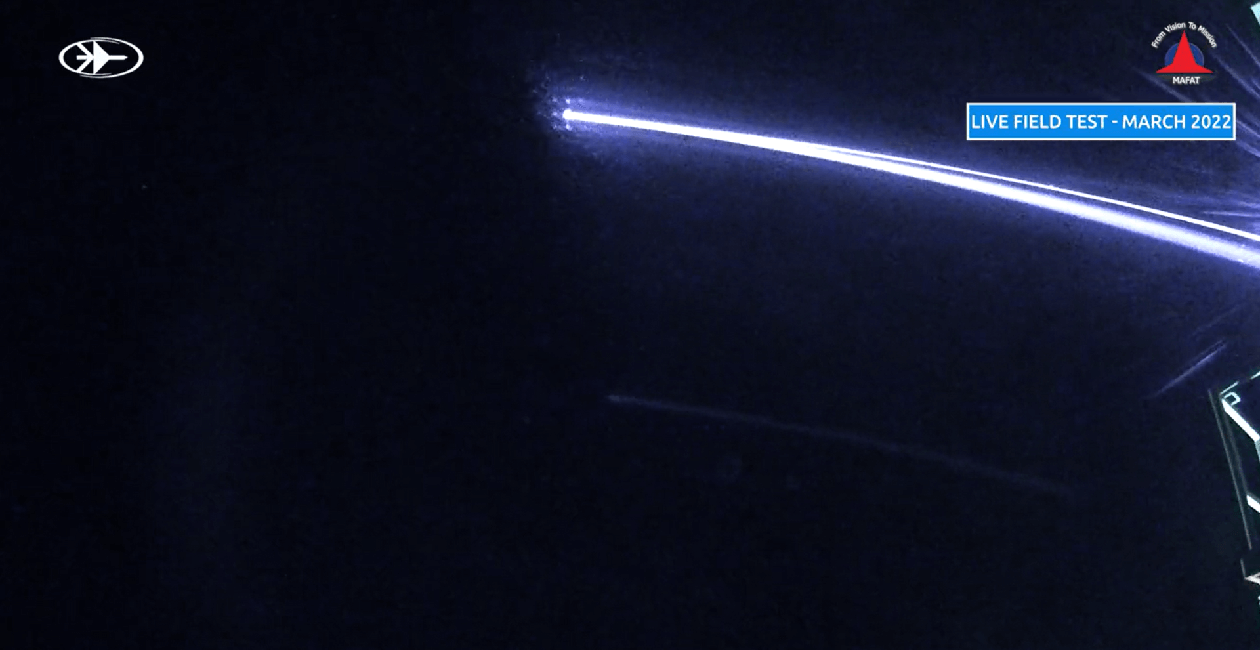When Russia launched its ‘Special Military Operation’ against Ukraine in February 2022, the war was between the two largest nations of Europe. The Russian Air Force (RuAF) had around 1250, mostly 4th or 4.5-generation fighter aircraft, while the Ukrainian Air Force (UkAF) had around 100 fighters, giving Russia a 12:1 fighter aircraft superiority in numbers.
Russia had a similar or better advantage in strategic bombers, transport aircraft, AEW&C, Flight Refueling Aircraft (FRA), and attack helicopters, among other things. Russia also had the backing of a massive defense industry. With such overwhelming Russian superiority, Ukraine realized early that it would have to use innovative means to defend itself.
After Russia’s annexation of Crimea in 2014, Ukraine was working closely with the West and had openly expressed a desire to join NATO. In February 2022, US-led NATO came in full support of Ukraine.
In addition to massive funds, the West gave Ukraine equipment to defend itself. These included anti-tank missiles and drones to stem Russian ground advances. Much more important was the Air Defence systems that would prevent RuAF from using Ukrainian skies with immunity. Far from Russia achieving air superiority, Ukraine created an environment that is now termed “Air Denial.”
Intelligence, Surveillance, Reconnaissance (ISR), direct attack munitions and unscrewed systems, secure communications, and air defenses have gained prominence in modernization militaries. One of the biggest lessons of the Ukraine war is that a smaller air force can, in many ways, blunt a larger force.
Russia was forced to use expensive stand-off precision-guided weapons and cruise missiles against targets that once could have been destroyed by much cheaper gravity iron bombs.
Russian Aerospace Force’s Offensive CapabilityThe
Russian Aerospace Force (VKS) has over 3,000 aircraft, of which nearly 1,200 are combat aircraft. These comprise nearly 60 each Tu-22M3 Backfire bombers and Tu-95MS Bear; 13 Tu-160 Blackjack; 86 MiG-29 Fulcrum; 88 MiG-31BM (multi-role); 24 MiG-31K (for Kinzhal Strike); 101 Su-27 Flanker; 100 Su-30 variants; 34 Su-34; 111 Su-35S; 68 Su-24M/M2 Fencer; 165 Su-25 Frogfoot; and 14 Su-57 Felon.
They had nearly 10 AEW&C, 60 aircraft for ISR (mostly Maritime), 15 Il-78 tankers, 17 EW aircraft (mostly ELINT), and 4 Presidential airborne command posts. Russia has around 340 attack helicopters (Ka-52, Mi-24, Mi-28, Mi-35).
Despite clear superiority over Ukraine, the numbers were not good enough to directly take on the expanded NATO.
VKS (Russian Air Force) has shown clear limitations and somewhat lackluster performance in the Ukraine conflict. It failed to gain air superiority, was unable to sufficiently degrade Ukrainian ground-based air defenses, could not carry out deep interdiction attacks against Ukrainian military targets, and was unable to provide adequate fire support to front-line ground forces.
They had not anticipated determined resistance from Ukrainian ground-based air defenses bolstered by Europe and the United States. They had anticipated an early conclusion of the invasion, but that was not to be.
The VKS lost nearly 20% of the initial strength of the Sukhoi Su-34 fighter ground-attack fleet, the highest attrition rate across all its aircraft types. The Su-25 ground-attack losses were also significant.
Russia also suffered heavy rotor-wing losses, particularly among Ka-52 Hokum attack helicopters. The VKS’s underperformance in Ukraine has also illustrated its gap in special-mission aircraft. There is a dearth of ISR, electronic warfare, and jamming aircraft. Russia should have realized that SEAD (suppression of air defense) cannot be half-hearted.
The attrition among fighter aircraft caused Russia to rely more heavily on long-range aviation that operated farther from Ukrainian air defenses and relied on land-attack cruise missiles.
The sporadic nature of the attacks reflected supply constraints of the long-range Raduga Kh-101 missile that replaced the Kh-25/Kh-27 and Russia’s desire to conserve its precision-strike resources for a potential campaign against Ukrainian critical infrastructure. The VKS also employed some tactical weapons, including at least one variant of the Kh-38M and the Grom glide bomb.
The VKS also had to contend with leadership turmoil in 2023. Shortly after the group’s rebellion in June, the Kremlin removed service chief General Sergei Surovikin, who was associated closely with Wagner chief Yevgeny Prigozhin. The Russian industrial complex had not anticipated a long war but managed to accelerate aircraft and weapon production. The focus is currently short-term.
Yet, Russia was forced to turn abroad to meet equipment needs. Iran is providing Moscow with UAVs and direct attack munitions. North Korea supplied up to 1,000 containers of equipment and munitions.
Ukrainian Air Defences
In 1992, the newly independent Ukraine took over control of the three AD corps stationed in Ukraine and retained the Air Defence Forces of Ukraine as a separate armed service, equal in status to the Ground Forces, Air Forces, and Navy.
Russia’s invasion met with a level of US and European support for Kyiv that the Kremlin had not anticipated. Western governments initially supplied Ukraine with large amounts of munitions and other military equipment from existing equipment inventories and exposed the relative shallowness of many NATO countries’ munitions stocks. Air-defense equipment featured heavily in the transfers. The strong performance of these systems in Ukraine is likely to drive demand elsewhere.
Throughout 2023, Ukraine was able to put the Russian Black Sea Fleet on the back foot, strike key targets even in Russia, including some in the Moscow area, and limit Russian air-force operations to a stand-off role. Kyiv was unable, though, to succeed in its highly anticipated 2023 counter-offensive, which boasted modern Western equipment and troops that had received specialized training in the West.
Ukraine inherited a significant inventory of aircraft from the Soviet Union. According to Flight Global, 43 MiG-29s, 12 Su-24s, 17 Su-25s, and 26 Su-27s were in active service in 2021.
Since the 2022 Russian invasion, Ukraine has lost nearly 75 aircraft, including 50 fighters, mostly on the ground. Ukraine also had Soviet/Russian AD systems such as the S-300 (SA-11), the Buk (SA-10), S-125 Neva/Pechora, and 2K12 Kub, self-propelled, medium-range SAMs. They also have Strela and Igla Infrared homing Man-Portable Air Defence Systems (MANPADS).
Ukraine received significant AD systems from the West. As per Military Balance 2024, some of the major systems included 12 x IRIS-T SLM Medium-range SAMs, 8 x Skynex 35mm self-propelled air defense artillery, eight TRML-3D Air-surveillance Radars from Germany; 12 Batteries of NASAMS Medium-range AD system, and 14 x Vampire Point-defence SAM funded by the USA; 100 x MR-2 Viktor 14.5mm self-propelled air defense artillery from Netherlands; Terrahawk Paladin 35mm self-propelled air defense artillery from the UK; Counter UAV systems from Australia; Belgium sent several Mistral launchers, AIM-120 for NASAMS, and 8 RIM-7 Sea Sparrow for SAM systems; Canada sent a battery of NASAMS and significant numbers of AIM-120 AMRAAMs, AIM-9s, AIM-7 beyond-visual-range missiles; Finland has sent AA guns; France sent one SAMP/T battery, two Crotale NG batteries, and a complete short-range air defense system; and Israel sent anti-drone systems. The list is unending.
Many NATO countries, such as Denmark, will be transferring F-16 aircraft in summer 2024. Ukraine also received over 2,000 US-made shoulder-fired Stinger missiles for MANPADS. A large number of AD instructors were sent from many countries. Bulgaria supported the repair of non-functional S-300 missiles in Ukraine. Ukraine has been pleading for Patriot air defense systems as Russia was destroying its power grid.
The bolstered Ukrainian air defenses were able to limit Russian combat-aircraft operations over the front line but struggled to keep pace with the barrage of cruise missiles, UAVs, direct-attack munitions, and high-speed weapons launched by Russia. Moscow, at times, had to reduce the pace of its attacks to restock but has been able to replenish.
Innovative Use Of Air Defense (AD) Systems
Kyiv continued to try to innovate weapons technology. After absorbing the invasion, Ukraine halted Russia’s attempt to seize Kyiv by causing unacceptable losses to Russian air strike aircraft. Western space-based ISR, secure communications, command and control support (AEW&C), helped early warning and quick AD response. Western AD systems allowed full AD bubble cover, and the training of Ukrainians helped.
Ukraine camouflaged the AD systems well. It also followed “shoot and scoot” tactics to prevent exposing the location. Thus, Ukraine established what is called “Air Denial” over its territory, forcing Russia to use expensive stand-off weapons.
Though Russia used over a dozen hypersonic weapons, their military impact was questionable. Claims that American AD systems neutralized Kinzhal hypersonic missiles are being questioned. In the long term, MANPADS are not enough; LR-SAMs (long-range surface-to-air missiles) are required.
Ukraine did manage a better dispersal of assets after the initial months. UAVs/drones have democratized air power. Ukraine used the loitering munitions very effectively. In fact, the world is having a relook at CSFO (counter surface force operations) by crewed aircraft and would switch to loitering munitions.
Meanwhile, the counter-drone success rate has gone up to nearly 60%. However, anti-drone systems will need to take on large saturating drone swarms and SSM (surface-to-surface missile) attacks.
Countries need to train for operations during a denial of service. Innovation doctrinal changes are required. Information Technology as a decisive factor in war has been underscored. AI helped shorten the decision-making loop. Ukraine managed to create creative disruptions, including in the cyber domain.

Lessons From Israel’s Ongoing Conflicts
Israel has been fighting against Hamas and Houthis, both of which have no air force but significant drones and SSM (surface-to-surface missiles).
Hamas innovatively used “Motor Gliders.” The Israeli intelligence failure was underscored. Neutralizing a rocket barrage has its own complexities. Success rates are often exaggerated. Cost vs. effect calculus needs to be calculated. The need for strong air defenses has come out very clearly.
Iranian planned attack had already been announced and anticipated. Western and local Arab Allies, like the United Arab Emirates, Jordan, and Saudi Arabia, had given sufficient intelligence and radar warning.
Israel was prepared and had the active military backing of the US and many Western air forces already in the region. Nearly 325 projectiles, including 185 drones, 110 ballistic missiles, and 30 cruise missiles, were fired by Iran. Israel and its allies claim to have neutralized 99%.
Will India be able to defend against a massive drone-cum-missile attack of the kind Iran made on Israel?
Can India Defend Against Such Attacks?
Ballistic missiles follow a high-altitude, predictable trajectory and are detectable by radar. Drones fly at a very low altitude, like a slow-moving cruise missile, making them very difficult to detect. Drones are difficult to intercept until they have come uncomfortably close.
India has reasonably good radar coverage of the Swordfish radars, which are based on the Israeli Greenpine radar for ballistic missile early warning. Radars, IR, and acoustic sensors for detecting drones and cruise missiles are still evolving.
Airborne Early Warning and Control systems (AEW&C) can detect these drones, but there is a limitation due to the limited number of these assets in the Indian Air Force (IAF) inventory and even fewer available for operations.
India’s AD radars are well-networked, and a comprehensive air picture is available through the IAF’s Integrated Air Command and Control System (IACCS).
Also, even after detection, to be able to take on a barrage of these weapons requires appropriate AD weapons. India has anti-air artillery (AAA), like Bofors 40 mm (L-70) and Zu-23-2 Shilka guns; shoulder-fired MANPADS like Igla-S, indigenous Akash missile system with range 30 km; SPYDER Python-5 (20 km), and Derby (50 km); Indo-Israeli Medium Range Surface to Air Missile (MRSAM) missiles (70 km), and LR-SAM (100 km).

Newer Akash variants can cover up to 80 km. QR-SAM with a 30 km range is under trial. The Indian military also has significant numbers of Russian 9K33 Osa, 2K22 Tunguska, and Pechora missile systems. More recently, India has acquired the S-400 systems that cover the AD bubble up to 400 km and an altitude of 30 km.
These are expensive and meant to take fighters and AEW&C class targets. The limited numbers do not allow them to be used against drones costing around $10,000.
A small country like Israel has nearly 10 batteries of Iron Dome systems designed to take on small, fast-moving threats. Each battery costs $50 million, and each intercept costs close to $150,000.
While individual missiles have a kill probability close to 98%, on a large raid, how many can be fired or intercepted is in question. The longer-range and even more costly Israeli “David Sling” AD system covers up to 250 km.
Undoubtedly, India needs many more AD systems, the capacity to build more missiles, and surge production capability. But a much better option is to develop advanced Directed energy Weapons (DEW).
“Iron Beam” is an Israeli DEW (laser weapon). DEW is still evolving, and there are complexities related to atmospheric conditions and the ability to point at the target accurately. Yet typically, the cost of each interception is negligible, as little as $2,000 per shot to cover all costs against $150,000 per interceptor missile.

The Air Superiority 2030 – Lessons For India
What does Indian air power need to learn from the recent conflicts and the projected future of air superiority? India will have to fight conventional military forces in a highly contested peer-capable environment. It will face integrated and networked air-to-air, surface-to-air, space, and cyberspace threats with advanced fighter aircraft, sensors, and weapons.
Future air wars will require Penetrating Counter Air (PCA) capability that can defeat agile, intelligent platforms. There will be a need to counter hypersonic weapons, low-observable cruise missiles, and sophisticated conventional ballistic missiles.
Future wars will require exploiting air and space together. Crewed-uncrewed teaming will also be very advanced. Directed Energy Weapons (DEW) will dominate. Significant Cyber Force will be required, as will sophisticated electronic warfare capability.
India will require many more fighter squadrons to match the PLAAF’s growing 5th-generation assets. Many more space-based ISR assets, AEW&C, and FRA will be required.
Cruise missiles and munitions stockpiles will have to go up for a possible long war. Large drone inventories will be required. Supply chain dynamics would have to be factored in. Most importantly, AD systems will have to increase in numbers. There is a need to hasten indigenous programs and production, and build future-proof industrial capability.
- Air Marshal Anil Chopra (Retired) is an Indian Air Force veteran fighter test pilot and Ex-Director-General of the Center for Air Power Studies in New Delhi. He has been decorated with gallantry and distinguished service medals while serving in the IAF for 40 years. He tweets @Chopsyturvey
- Follow EurAsian Times on Google News




